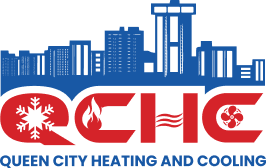The Show-Me State experiences dozens of tornadoes and thunderstorms each spring and summer. This wild weather can wreak havoc on your home’s heating and cooling system. Discover the ways to prepare the HVAC system in your home in Nixa, MO for the upcoming storm season.
Schedule a Professional Inspection
Before storm weather arrives in Nixa, schedule a professional inspection for your HVAC system. This inspection identifies potential issues, such as a leaky hose or clogged drain line, that could prevent it from working reliably. It also ensures your system has enough refrigerant to keep your home cool during muggy, warm weather.
Clean or Replace the Filters
As spring approaches, check the filters in your system. Stormy weather kicks up dust and causes pollen and ragweed to circulate in the air outside your home.
Your filters play a key role in keeping allergens out of your home’s indoor air. Use high-quality filters that are the right size for your HVAC system. Clean or change them at least every two or three months.
Trim Overhanging Branches
Branches that hang over the outdoor unit also pose a risk to your HVAC system. High winds could cause them to fall and land on the outdoor unit, causing major damage to it.
Likewise, debris like leaves and acorns can fall on and get into the unit, clogging it and damaging components inside it. Rather than risk expensive repairs and your system not working normally, trim the overhanging branches.
Secure the Outdoor Unit
Additionally, you should secure the outdoor unit to prevent it from coming loose or knocking over during storms. Use hurricane clips or straps to keep it securely in place.
Seal and Insulate the Ductwork
Openings in your HVAC system’s ductwork let in elements like moisture and heat. Once inside, they make your home feel hot and humid. They also cause water damage to your walls and floors.
Inspect the ductwork to prepare this system for storm season. Use mastic or duct tape to seal cracks and holes or reattach loose ductwork.
Clean Out the Vents
The vents inside your home are also important to your HVAC system’s operation. Clogs consisting of dust, dirt, pet hair and other debris prevent cool air from blowing out of the vents and into your home. As the storm season nears, inspect and clean out the vents.
Install a Surge Protector
Lightning can cause power surges that disrupt your air conditioner’s function and could burn up wiring in your HVAC system. Protect it from the damage a power surge causes with a surge protector. It absorbs excess voltage from a lightning strike, protects components like the circuit board and thermostat and mitigates the risk of costly electrical repairs.
Elevate and Cover the Outdoor Unit
If your property floods during heavy rainfall, elevate the outdoor unit. Floodwaters that get into it will damage its motor and wiring. Some options to elevate it include concrete equipment pads, metal or wood platforms, anti-vibration mounts and wall-mounted brackets.
Consider covering the outdoor unit as well to protect it during storm season. Use a tarp to shield it from heavy rain and flying debris like hail and branches. You can also erect a canopy or use mesh screens to keep the unit safe during stormy weather.
Secure Loose Items in Your Yard
During high winds and thunderstorms, items like lawn chairs and gardening equipment pose a risk to your HVAC system. The wind can blow these items into the outdoor unit, causing expensive damage to it.
Before storms start, put loose items in your shed or garage. If you do not have a place to store them, secure them by tying them down with cable or rope.
Check for Loose Screws
Check your HVAC system for loose screws that could cause instability and damage during stormy weather. Tighten any that are loose, and replace damaged or stripped screws. One of our technicians will inspect the screws and replace or tighten any as needed during your system’s yearly maintenance.
Test the Thermostat
Before spring arrives, test the thermostat in your cooling system. Set it at a temperature that is lower than the temperature of the air in your home. Your system should turn on promptly and cool the air to the set temperature.
If your AC does not turn on or fails to cool the air, hire one of our HVAC technicians to service it. Your thermostat might need recalibrating. It may also need to be replaced to ensure your HVAC system will function normally.
Seal Openings Around the Windows and Doors
Openings around your windows and doors let humidity and heat into your home. These elements make the inside air feel muggy and warm. They also force your system to work harder to keep your home cool.
Before the stormy season arrives, check around your windows and doors to find any openings like cracks and holes. Use caulk, mastic tape or weatherstripping to seal them and better prepare your HVAC system for stormy weather.
Use a Backup Generator
Have a backup generator on hand to keep your HVAC system working during power outages. Use a professionally installed transfer switch to switch power from the electrical grid to your generator safely and prevent dangerous backfeeding.
Use it in a well-ventilated area to prevent carbon monoxide buildup. Monitor its fuel consumption during the outage to ensure the generator has enough power to keep your cooling system running until the electricity comes back on.
Restart It Safely
After a power outage, restart your HVAC system safely. Switch the system off at the thermostat to prevent sudden power surges. Then, reset the breaker by flipping the switch off and then back on.
Wait at least 30 minutes to help your system stabilize, which helps prevent overloads. Set the thermostat to the desired temperature and monitor the system for at least 10 minutes to ensure it is running normally.
Inspect It for Damage
After a storm, inspect your system for damage. Look at the outdoor unit to see if it has dents. Remove debris like leaves, grass and mud from it.
Additionally, inspect your system for water damage. Look for standing water in and around the outdoor unit. Avoid testing any electrical components that you suspect have water damage. Instead, hire one of our HVAC technicians to inspect and test them for you.
Routinely inspect your system for fungal growth, rust and corrosion during the storm season. Water causes this kind of damage. Our technicians will service your system to mitigate the risk this damage causes.
Listen to Its Noises
Protect your HVAC system’s lifespan this summer by paying attention to the noises it makes. Storm damage can cause your system to make unusual sounds like buzzing or humming, which could indicate damage to its electrical components. It could also make grinding or rattling, indicating that debris like leaves or twigs could be in the motor, obstructing the fan and other moving parts.
Rely on Us for HVAC Storm Preparation
At Queen City Heating & Cooling, we offer a 32-point service check that helps prepare your HVAC system for the storm season in Nixa. Along with maintaining your system, our team also installs and repairs HVAC equipment. We are a Ruud Pro Partner and belong to the Air Conditioning Contractors of America. Our business also has accreditation from the Better Business Bureau and is a HomeAdvisor Elite Service provider.
Interested in our Loyalty Club maintenance program? Contact Queen City Heating & Cooling to learn about HVAC system storm preparation.






